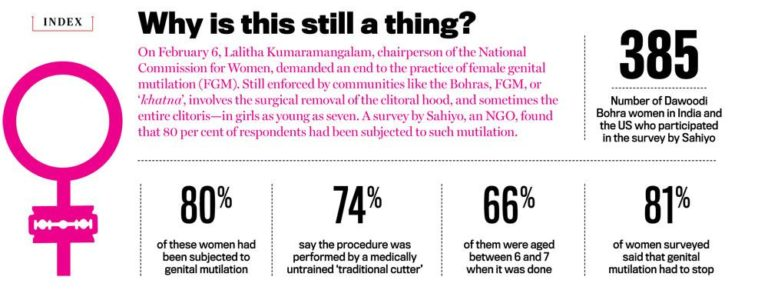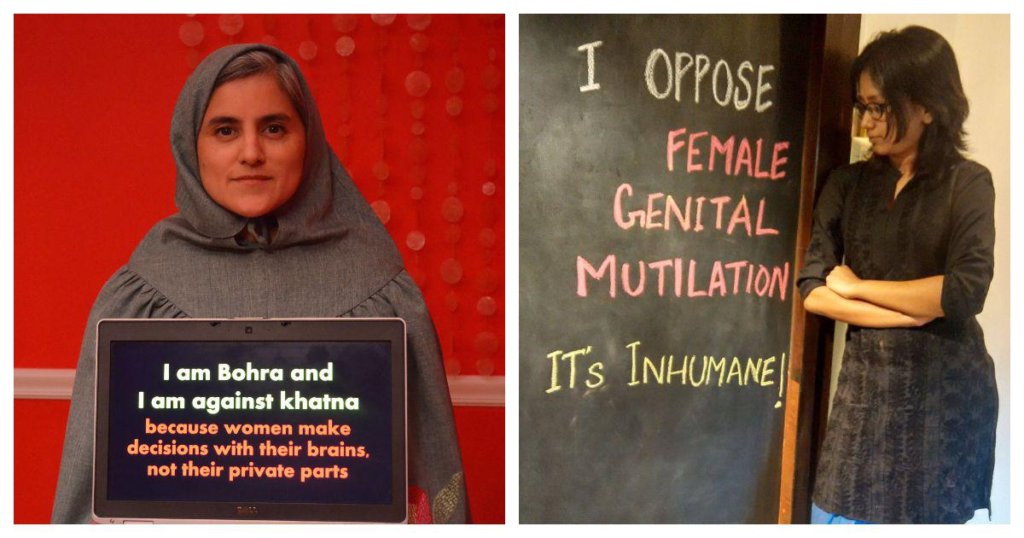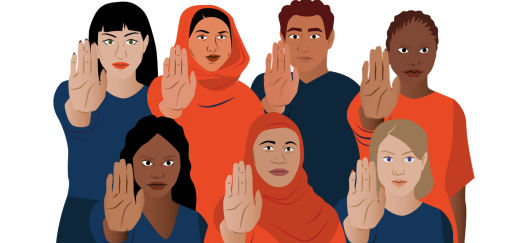Female Genital Mutilation in India
By – Eshna Sharma
Female Genital Mutilation (FGM) is a topic mired in secrecy and often swept under the carpet.
We tend to think that it happens only in backward tribal communities and in far-off lands but the chilling reality is that the practice of FGM in India is alive and thriving. Few women from the community dare speak against it for fear of ostracisation from the community.

FGM IN INDIA
According to UNICEF, Female genital mutilation (FGM) refers to “all procedures involving partial or total removal of the female external genitalia or other injury to the female genital organs for non-medical reasons.” FGM is a gross violation of girls’ and women’s human rights. A report published in 2018 states that three quarters of women among India’s Dawoodi Bohra, a sub sect of the Shia community, have undergone female genital mutilation (FGM). Shockingly, this report came just weeks after government officials said there was no data to support its existence.
Within the community, this practice is known as ‘khatna’ or ‘khafz’ . Young girls are taken by their mothers and other female relatives, usually to untrained midwives or older women in the community who carry out this procedure. The procedure is carried out usually with a knife or a blade, on girls aged anywhere between six and 10–the idea is to perform the procedure before the child reaches puberty.
Taken by ignorant family members that they had so explicitly trusted to dark, decrepit rooms where their pants are forced off, a blade taken to their genitals, causes immense emotional and physical trauma and leaves scars, both literal and metaphorical that take years to heal, or even a lifetime.

What can be the explanation given for this sickening practice?
Ignorance, illiteracy and ideas firmly entrenched in toxic patriarchal ideas that focus on exercising control over a woman’s sexuality are the root causes. The aim of the practice is to cut off the clitoris of the female, often referred to as a ‘source of sin’ or ‘haraam ki boti’. The clitoris is a highly erogenous zone owing to the concentration of a large number of nerve endings. The primary function of the clitoris is pleasure. The regressive mentality believes that if the woman is able to perceive the pleasure this brings her, it might lead her to go astray in her marriage and bring shame to the family.
Since the procedure is usually done by untrained, non-licensed midwives, the risk of permanent injury and unwanted infections runs high. In many cases, girls report bleeding for days on end.
Dr. Meghana Reddy J, a gynaecologist, reported in 2018 that khatna can lead to complications in later life, including difficult deliveries and urinary infections.
Many also report loss of sensitivity in the area and discomfort while urinating.
In addition, many survivors of khatn claim that sex is not an enjoyable activity for them and that it does bring them any pleasure.
Many women have a hard time speaking up about what was done to them. Some cannot recall memories of it at all, which is a common psychological coping mechanism, often found to be used by rape victims in order to suppress extremely traumatic and distressing memories.

GOVERNMENT DENIAL & ACTIVISM AGAINST FGM
There have, however, been a few encouraging developments in this overall miserable scenario. A few courageous women from the Dawoodi Bohra community have started to speak out and raise their voices against this fundamentally inhumane practice. In 2011, a woman from the community started an online petition calling for a ban to the practice, and in 2016, two Mumbai based NGOs started campaign to raise awareness about FGM.
In September 2017, when the 36th regular session of the United Nations Human Rights Council (UNHRC) was conducting a Universal Periodic Review of India, a written submission on FGM in India was presented at a side event. That was the first time the issue of FGM in India had been raised at the United Nations.
Masooma Ranalvi, a woman from the community who has undergone the horrors of khafz, started a transnational NGO ‘WeSpeakOut’, in addition to launching an online petition to call for the government to recognize female genital mutilation in India and working towards banning it. Seeing Masooma, many other women have gotten the courage to speak up about their heartwrenching experiences of female genital mutilation as little girls.
What is extremely frustrating for survivors of FGM in India is the governemt’s refusal to acknowledge the practice exists. Despite more and more people coming out with their stories, the government continuously denies the prevalence of FGM owing to “a lack of hard data”. This stance sets back the fight that activists like Masooma are working so hard to win.

WHAT NEXT?
According to a report on www.unearthed.com, One of the biggest reasons why Bohras might not take a public stand against khatna or blindly follow the practice is the fear of the Syedna, the religious leader of the Bohras who advocates khatna as an act of “religious purity.” Questioning or disobeying him results in social boycott. This means not only the individual who opposes him but the entire family gets barred from attending community weddings, funerals and entering the local mosque while professional relationships in this largely business community are also severed.
“Many of our members have been deeply humiliated by the clergy and were made to offer a public apology as well as disassociate themselves with us,” says Ranalvi. To further weaken the fight against FGM in India, The Dawoodi Bohra Women For Religious Freedom , a group of female khatna supporters, appealed for the practice to be protected.
Though the case for ban of the practice has been appealed in the Supreme Court of India, the verdict has been delayed owing to this tussle between the supporters and non-supporters o f the practice within the community. The decision has been deferred to a 5-member committee that still remains to be formed.
While relief for the women of the Bohra community seems nowhere in sight, it is encouraging that more and more women like Masooma are speaking out and taking a fearless stand for a safer and more equal tomorrow for young Bohra girls across India .
Author

